Meat Goat Evaluation
The goal of this contest is to raise awareness that the goats we raise are part of the food production system.
Download the Meat Goat Evaluation Record Book
Objective of Meat Goat Evaluation Contest
The goal of this contest is to raise awareness that the goats we raise are part of the food production system in some way shape or form. Nearly every goat we raise is eventually eaten by someone and we are all producing a high-quality, lean, nutritious and delicious protein source. With little to no promotion of commercial goats or goat meat, prices are soaring for both and there is great opportunity for commercial goat producers and in particular, Boer producers. No breed can add growth, gain and red meat to the commercial goat industry like the Boer breed.
The meat goat evaluation contest allows exhibitors to see first-hand how their projects are turned into a high-quality protein source. We will also collect DNA samples on each goat. They will be run on a 70,000 SNP goat test by Neogen and this will serve as the beginnings of a phenotype and genotype database for the Boer breed. The hope is to eventually collect enough data to identify markers that relate to economically relevant traits and make genetic improvement based on DNA technology.
General Contest Rules
Exhibitor must be a member of JABGA
Contest is open to bucks, does, & wethers
Goat must still have milk teeth
Must be owned at least 60 days prior to the national show
Limited to 1 goat per JABGA exhibitor
This is a terminal contest
Must participate in all 3 categories to be eligible for prizes and payouts
Live Class Rules
Animals must be slick sheared above the knees & hocks
This is a no fit, blow & go show (no adhesives, powder, or paint)
Classes will be divided by weight
Minimum live weight of 75 lbs.
Goats are subject to a random urine drug test
Carcass Class Rules
Carcass must be youthful appearing, no spool joints or excessive dark coloring
Carcass shall be free of serious bruises (“old”, not recent), free of injection sites on the more valuable carcass parts - leg, loin, rack and shoulder (neck excluded) and free of any evidence of surgical altering of the live goat
Slaughter facility reserves the right to condemn any carcass that does not comply with USDA standards
Scoring & Payout
Record book (50 Points Possible) placed 1-10, with payout to top five
Carcass class (50 Points Possible) placed 1-10 with payout to top five
Live class (50 Points Possible) placed 1-10 with payout to top five
Carcass & Live class point system as follows 1st=50, 2nd=45, 3rd=40,....etc.)
Overall contest score is determined by the aggregate total of points earned from each category
Carcass Class Evaluation Criteria
Carcass rankings will be determined through a combination of collected data and visual appraisal
Data Collected During Carcass Class
Photos | Photos of the whole carcass and close up or ribbed section. Serves as both an educational piece and verification. |
DNA | A tissue sample of each carcass will be submitted to Neogen for genotyping and storage. |
Age (Months) | Market goats are usually referred to as kid/cabrito (2-14 months), young chevon (14-24 months), or aged chevon (over 24 months). |
Live weight (LW) | Taken at live show in pounds |
Hot Carcass Weight (HCW) | Taken after harvest, hide, hooves, head removed, ready for chill (lbs.) |
Leg Confirmation Score |
|
Confirmation Score | 1 = Carcasses have a high proportion of meat to bone, are thickly muscled throughout the body with a bulging outside leg, rounded back strip, and a moderately thick outside shoulder. 2 = Carcasses have an average proportion of meat to bone, are moderately muscled throughout the body as indicated by a slightly thick and a slightly pronounced outside leg, a slightly full (flat or slightly shallow) back strip, and a slightly thick to slightly thin outside shoulder. 3 = Carcasses have a low ratio of meat to bone, an inferior meat type conformation. The legs, back, and shoulders are narrow in relation to its length. (Selection No. 3 carcasses resemble skinned jackrabbits) Leg Circumference Measured in cm at widest part of leg (average of both legs) |
Kidney, pelvic & heart fat (%KPH) | As % of HCW, typically .0-5-3.5%. 1% = Small amount primarily in flank area 2% = heavier in flank, down to navel 3% = very heavy amount, into chest cavity |
Subcutaneous Fat Cover Score (SQF) | External fat cover score as 1= minimal/none. 2= fat over rib and shoulder. 3= excessive fat cover. |
Back Fat (BF) | Measured at center of Loin eye on 12th rib (tenths of an inch), adjusted by visual appraisal of entire carcass. Minimum and maximum adjusted fat thickness at the 12th rib, .05 inches to .25 inches, respectively. |
Loin Eye Area (LEA) | 12th rib loin eye (Longissimus) area. Use standard 1/20 loin eye grid, measure both sides, average. (Sq. Inches) |
Body Wall | Body wall thickness (includes fat, bone, and lean) measured 1" beyond |
Thickness (BWT) | Loin eye, on both sides and averaged. (tenths of inch) |
Flank Lean Color | A, B, C = A is lightest and pinkest, C is darkest |
Calculated Dressing % (DP) | (HCW/LW) X100. |
% Cutability | 60.6933 - (0.23174 x HCW) + (1.96202 x Loin Eye Area) - (1.57832 x BWT) |
60.6933 - (0.23174 x HCW) + (1.96202 x Loin Eye Area) - (1.57832 x BWT | Estimated percent boneless, closely trimmed retail cuts (%BCTRC) from the leg, loin, rack, and shoulder are used in ranking. 49.936 - (.0848 x hcw) - (4.376 x 12th rib fat) - (3.530 x BWT) + (2.456 X LEA) |
For more information or questions, contact Rodney Wilson, National Show Chair, region.10@abga.org

